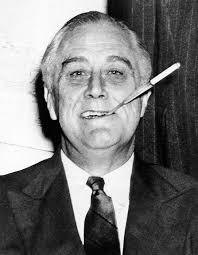The Myth of “Government by Injunction”
This essay first appeared in Law & Liberty, on June 5, 2019 (here). Thank you, Real Clear Policy (here)!

The subject of labor law, which I practiced for 30 years, has spawned many myths, none more widely-embraced than the canard that, prior to passage of the Norris-LaGuardia Act in 1932, [1] federal courts routinely issued injunctions to restrain peaceful labor disputes between employees and their employer. According to 20th century trade unionists, “labor injunctions,” the focus of then-professor Felix Frankfurter’s fabled 1930 book, [2] were a tool of capitalist oppression and industrial tyranny. In New Deal mythology, the Norris-LaGuardia Act, which withdrew jurisdiction from federal courts to issue injunctions in most labor disputes, [3] represents—along with the 1935 Wagner Act—the “Magna Carta” of organized labor.
Proponents of the Norris-LaGuardia Act claim that it was necessary to prevent the issuance of abusive injunctions restricting peaceful union activities. Critics view the law differently—the first step down the road to granting legal privileges to unions and abrogating employers’ longstanding legal rights. The notion that federal courts were one-sided in issuing injunctions—and that peaceful picketing was routinely enjoined–has been accepted as gospel. But was the epoch of “government by injunction” myth or fact?
Prior to 1932, it is true, employers sometimes availed themselves of legal remedies for union misconduct, such as engaging in violence, forcibly interfering with the employers’ business, and preventing willing workers (condemned as “scabs”) from performing services during a strike. This was not an abuse of the legal system, but a legitimate assertion of rights under state and federal law that prohibited coercive and anticompetitive conduct. Before the National Labor Relations Act was passed in 1935, drastically altering the legal landscape and ushering in an era of federal preemption, state law governed the employment relationship (and in many cases proscribed conduct deemed to constitute common law “restraints on trade”).
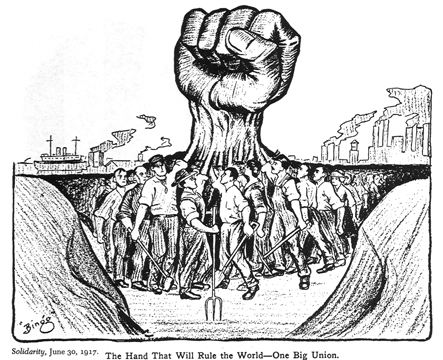
The common law was surprisingly hospitable towards union activity. Unlike merchants and manufacturers, whose collusion was deemed to constitute a tortious restraint of trade, peaceful wage-fixing by labor unions in the guise of “collective bargaining” and other concerted activity was never proscribed in the United States (at least not since Commonwealth v. Hunt in 1842).[4] Concerted action, such as strikes and picketing, was not regarded as unlawful so long as strikers did not use force or violence to interfere with an employer’s business. But the common law did not countenance thuggery, threats, and intimidation of recalcitrant employers and nonunion workers. Employers could and did file lawsuits against unions when they violated other people’s rights, and sometimes employers obtained injunctive relief against violent or coercive union conduct.
In the late 19th century, employers had learned to combat labor violence and disruptive tactics (such as secondary boycotts) by seeking injunctions against unions under common law rules forbidding conspiracies and restraints of trade. After the Sherman Act was enacted in 1890, unions were also subject to the federal antitrust laws, and were sometimes enjoined on that basis. Radical union leader Eugene Debs was jailed for violating such an injunction during the infamous Pullman strike in 1894. [5] When the Supreme Court explicitly applied the antitrust laws to unions in 1908 (Loewe v. Lawlor), organized labor successfully lobbied for passage of an antitrust exemption in the 1914 Clayton Act, but unions remained subject to injunction for violations of state law. Moreover, in Duplex Printing Co. v. Deering (1921), the Supreme Court ruled that the Clayton Act did not protect secondary activity—union pressure against third-party employers who were not parties to the labor dispute.
Labor union advocates coined a pejorative slogan to demonize employers’ exercise of their legal rights–“government by injunction”–which the Democratic Party platform rallied behind as early as 1896. After an abortive effort at reform in 1914 (with passage of the Clayton Act), [6] union pressure ultimately led to the enactment of federal legislation in 1932 forbidding federal courts to issue injunctions in labor disputes in most cases.
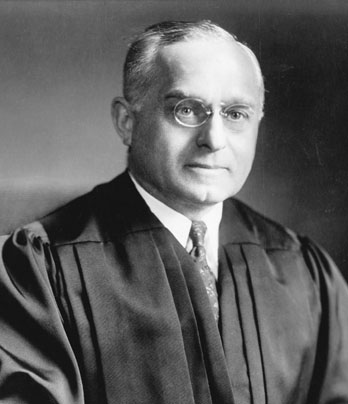
The goal of the Norris-LaGuardia Act was to prevent federal courts from issuing injunctions against labor unions for any reason—effectively granting them a legal privilege. [7] Harvard Law School professor Felix Frankfurter, an ardent champion of organized labor (among other progressive causes), was the principal drafter of what became the Norris-LaGuardia Act [8] before FDR appointed him to the Supreme Court in 1939. Frankfurter and a former student of his at Harvard, Nathan Greene, also wrote an influential book in 1930 entitled The Labor Injunction, contending that federal courts granted such injunctions with excessive zeal. Frankfurter and Greene catalogued the issuance of injunctions in labor disputes, but failed to analyze the circumstances in which they were granted, in effect presuming that all disputes involved peaceful “primary” activity. This was false.
The Labor Injunction was tendentious enough to be called a “brief for the Norris-LaGuardia Act,” yet is now cited reverentially by pro-labor scholars, most of whom tilt to the left. [9] Unions had long sought immunity from federal court injunctions, and in 1932, with the aid of Frankfurter’s one-sided scholarship, they finally obtained it.
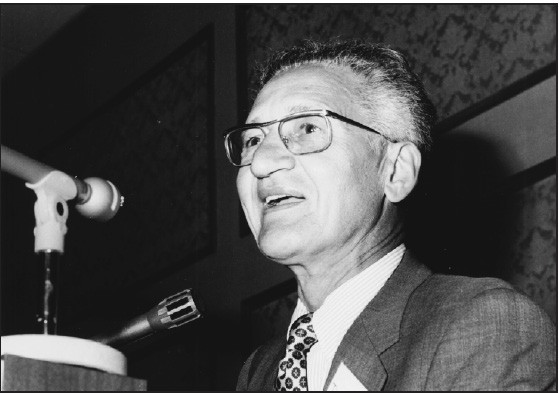
The late Professor Sylvester Petro, who taught labor law at NYU and Wake Forest for decades (and whom I profiled in Misrule of Law), argued that it is a myth. He did this in a series of law review articles published in the Wake Forest Law Review and North Carolina Law Review from 1978-1982. Petro meticulously reviewed every reported state and federal court labor-injunction case during the period 1880 to 1932—numbering 524–to determine if the courts acted in accordance with traditional principles of equity. Petro concluded, based on his exhaustive research, that, on the whole, courts faithfully followed the well-established common law rules and relevant procedure.
Rather than finding class bias in favor of employers, Petro found that courts most often ruled in favor of non-union workers wishing to accept employment on terms that union employees had refused—that is, the courts protected the right of “scabs” to work during a strike. Specifically, Petro concluded that “not one primary strike for better terms and conditions of employment was ever finally enjoined merely as such.” [10] The same is true for peaceful primary picketing and other forms of “strictly peaceable persuasion”: courts only granted relief when such conduct was intertwined with violence.
Petro writes:
Like the other crusaders, Messrs. Frankfurter and Greene in The Labor Injunction were very quiet about the principal feature of the labor-disputes brought before the courts of equity between 1880 and 1932. Violence, vandalism, property destruction, and intimidation dominated the cases. A discussion of the labor-injunction cases which ignored that fact amounted to staging the play Hamlet without the character which gave it meaning. When forced to recognize this, the crusaders typically blamed employers either for the violence itself or for bringing it on. But the facts of the hundreds of violence cases collected here are clearly to the contrary. The aggressors were the unions and the organized workers; the victims were mainly and directly nonunion, anti-union, or rival-union employees, and secondarily the investors in the businesses which violent unionists so frequently besieged, bombed, and vandalized. [11]
Petro concludes:
Those unaware of the pervasive violence in the cases cannot properly understand let alone appraise the rulings of the much maligned judges in the age of “government by injunction.” …[H]ad the unionists pursued their objectives peacefully and lawfully there would have been no “government by injunction.” [12]

In short, Petro believes that the judges who administered equity in labor-disputes between 1880 and 1932 “ranked high among the most faithful and gallant public servants that the United States has ever had.” [13] Professor Richard Epstein concurs with Petro, noting that
In my view Petro has much the better of the historical argument. The chief flaw of the Frankfurter and Greene study is, as Petro points out, that it never asks the question of whether the issuance of the labor injunction was a use or an abuse of power. Where there is the threat of force by workers, it is the failure to grant the injunction that is the abuse of discretion, not its issuance. And as Petro rightly points out, the application of the injunction to labor cases did not involve any departure from the well established equitable principle that injunctions are an appropriate response to threats of irreparable harm. [14]
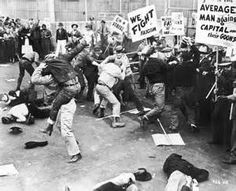
And yet in the mythology of American labor history judges granting injunction against unions have been reviled as despicable tyrants and bullies. This is a specious delusion. Labor unions and their advocates complain about employers’ legal abuses, but organized labor enjoys remarkable privileges under federal law, including the Norris-LaGuardia Act. [15]
P.S. I highly recommend Tom Woods’ podcast on this topic, which I discovered after the article was written (here).
[1] 29 U.S.C. §§ 101–115.
[2] Felix Frankfurter & Nathan Greene, The Labor Injunction (1930).
[3] 29 U.S.C. § 104.
[4] 45 Mass. 111 (1842).
[5] In re Debs, 158 U.S. 564 (1895).
[6] The Clayton Act, designed to exempt labor unions from antitrust liability, declared that “The labor of a human being is not a commodity or article of commerce. Nothing contained in the antitrust laws shall be construed to forbid the existence and operation of labor…organizations, …or to forbid or restrain individual members of such organizations from lawfully carrying out the legitimate objects thereof; nor shall such organizations, or the members thereof, be held or construed to be illegal combinations or conspiracies in restraint of trade, under the antitrust laws.” 15 U.S.C. section 17.
[7] See Paul Moreno, “Organized Labor and American Labor Law: From Freedom of Association to Compulsory Unionism,” 28 Social Philosophy & Policy 22, 31-40 (2008).
[8] See James E. Pfander, “Judicial Purpose and the Scholarly Process: The Lincoln Mills Case,” 69 Washington University Law Review 243, 266 (1991).
[9] Moreno, supra note 7, at 24.
[10] Sylvester Petro, “Injunctions and Labor Disputes: 1880-1932 Part I: What the Courts Actually Did—And Why,” 14 Wake Forest Law Review 341, 345 (1978).
[11] Id. (emphasis added).
[12] Id. at 345-46.
[13] Id. at 346.
[14] Richard Epstein, “A Common Law for Labor Relations: A Critique of the New Deal Labor Legislation,” 92 Yale Law Journal 1357, 1407 n.149 (1983) (emphasis added; citations omitted).
[15] See Moreno, supra note 7, at 40-52; Mark S. Pulliam, “Monopoly Union Power, Wage Competition, and the Labor Antitrust Exemption: ‘Which Side Are You On?’,” 13 Pacific Law Journal 29, 42, 55-57 (1981).
